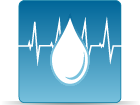Glycidaldehyde
CASRN 765-34-4 | DTXSID9020665
- IRIS Summary (PDF) (15 pp, 121 K)
On this page:
Noncancer Assessment
Reference Dose for Oral Exposure (RfD) (PDF) (15 pp, 121 K) Last Updated: 08/22/1988
| System | RfD (mg/kg-day) | Basis | PoD | Composite UF | Confidence |
|---|---|---|---|---|---|
| Endocrine, Urinary, Hematologic, Other | 4 x 10 -4 | Weight gain retardation, enlarged adrenals, hydropic renal pelvis and hematopoietic effects |
NOAEL
:
1.09
mg/kg-day |
3000 | Low |
Reference Concentration for Inhalation Exposure (RfC) (PDF) (15 pp, 121 K)
Not assessed under the IRIS Program.
Cancer Assessment
Weight of Evidence for Cancer (PDF)
(15 pp, 121 K)
Last Updated: 08/01/1991
| WOE Characterization | Framework for WOE Characterization |
|---|---|
| B2 (Probable human carcinogen - based on sufficient evidence of carcinogenicity in animals) | Guidelines for Carcinogen Risk Assessment (U.S. EPA, 1986) |
- Based on no human data and an increased incidence of malignant tumors in rats and mice following subcutaneous injection of glycidaldehyde and of skin carcinomas following dermal application to mice. Glycidaldehyde shows mutagenic activity in many assay systems and is known to be highly reactive because of the epoxide and the aldehyde groups. A number of structurally related epoxide compounds are also carcinogenic in experimental animals, including the analogues glycidol and propylene oxide.
- This may be a synopsis of the full weight-of-evidence narrative.
Quantitative Estimate of Carcinogenic Risk from Oral Exposure (PDF) (15 pp, 121 K)
Not assessed under the IRIS Program.
Quantitative Estimate of Carcinogenic Risk from Inhalation Exposure (PDF) (15 pp, 121 K)
Not assessed under the IRIS Program.
Other EPA Information
- Human Health Benchmarks for Pesticides (HHBP). This database provides human health benchmarks for pesticides that may be present in drinking water.
- Office of Pesticide Programs Pesticide Chemical Search. This database provides links to health effects information and registration status for pesticides.
- Chemistry Dashboard. This database provides information on chemical structures, experimental and predicted physicochemical, and toxicity data.
Critical Effects
Chemical Structure

Synonyms
- Epihydrinaldehyde
- Epihydrine aldehyde
- Formyloxiran
- Glycidal
- Glycidaldehyde
- Glycidyaldehyde
- Glycidylaldehyde
- Oxirane-carboxaldehyde
- Propionaldehyde, 2,3-epoxy-
- RCRA Waste Number U126
- UN 2622
- 2,3-Epoxy-1-propanal
- 2,3-Epoxypropanal
- 2,3-Epoxypropionaldehyde
- 765-34-4



